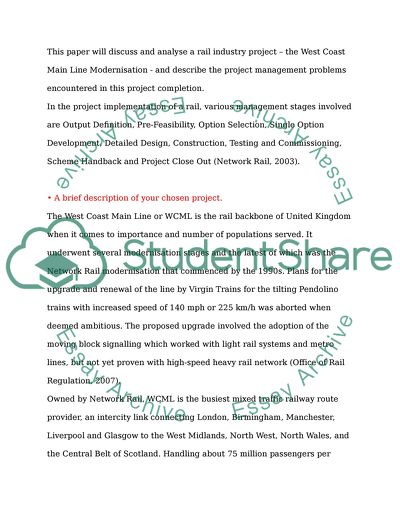Cite this document
(“West Coast Mainline Modernisation. Project Analysis Essay”, n.d.)
Retrieved from https://studentshare.org/engineering-and-construction/1428493-west-coast-mainline-modernisation-project-analysis
Retrieved from https://studentshare.org/engineering-and-construction/1428493-west-coast-mainline-modernisation-project-analysis
(West Coast Mainline Modernisation. Project Analysis Essay)
https://studentshare.org/engineering-and-construction/1428493-west-coast-mainline-modernisation-project-analysis.
https://studentshare.org/engineering-and-construction/1428493-west-coast-mainline-modernisation-project-analysis.
“West Coast Mainline Modernisation. Project Analysis Essay”, n.d. https://studentshare.org/engineering-and-construction/1428493-west-coast-mainline-modernisation-project-analysis.


